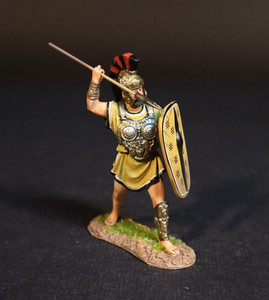
Armoured Warrior
By the mid-17th century, the Iroquois had hunted the beaver to near depletion in the St. Lawrence River area. Needing beaver pelts to trade for much needed items, the Iroquois expanded their hunting to the Ohio Country. When they did this the Iroquois ran into other tribes in the region who also traded beaver fur. These tribes included the Algonquian-speaking tribes, such as the Lenape and the Delaware, and the French merchants that supported them.
This accidental meeting led to a series of battles and bitter rivalries that lasted over 60 years. Each side was vying to be the main supplier in the lucrative beaver pelt trade.
Although the Iroquois Confederacy could be considered victors as they conquered most of the Ohio Country, they too suffered and lost much in the process. Iroquois homes and agricultural land were often burnt down by the French.
In 1701, the Treaty of Grande Paix was signed by the British, the French, the Iroquois Confederacy and the tribes of the Great Lakes. The treaty did not push the French out of the territory, but it did solidify an alliance between the Iroquois Confederacy and the British that would later help both in the French and Indian War.
The wars and subsequent commercial trapping of beavers was devastating to the local beaver population. Trapping continued to spread across North America, extirpating or severely reducing populations across the continent. The natural ecosystems that came to rely on the beavers for dams, water and other vital needs were also devastated leading to ecological destruction, environmental change, and draught in certain areas. The beaver populations in North America would take centuries to recover in some areas, while others would never recover.






